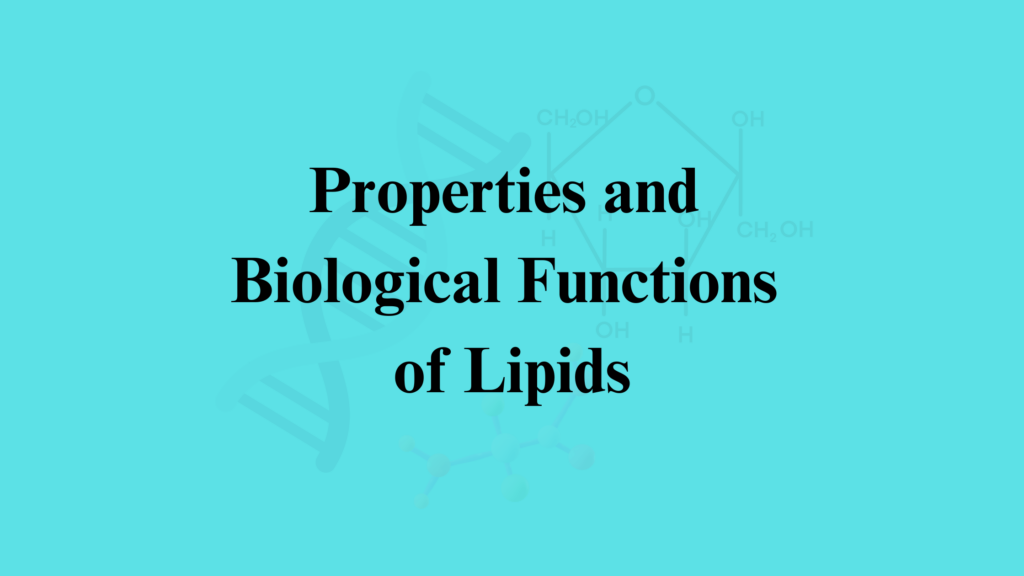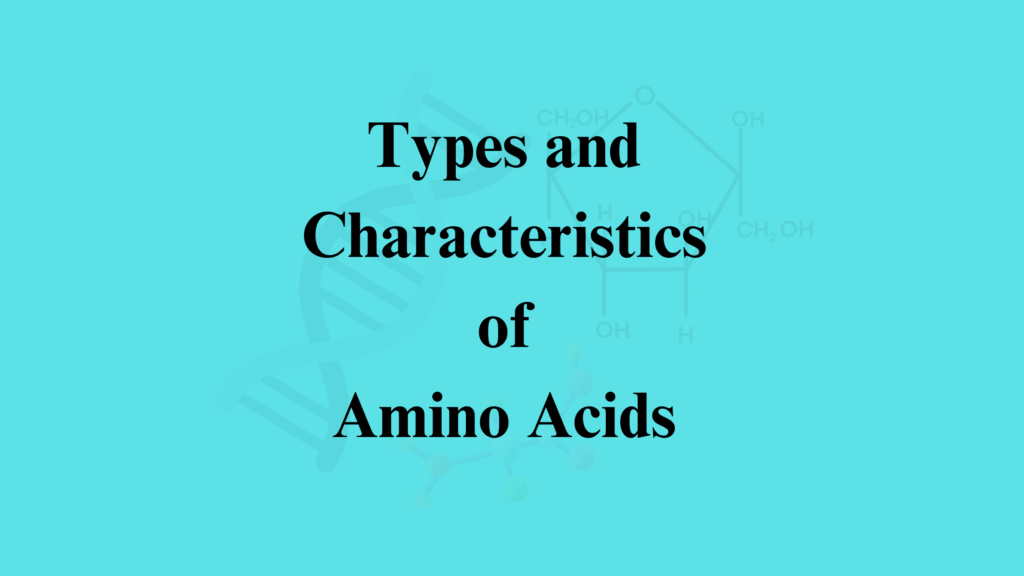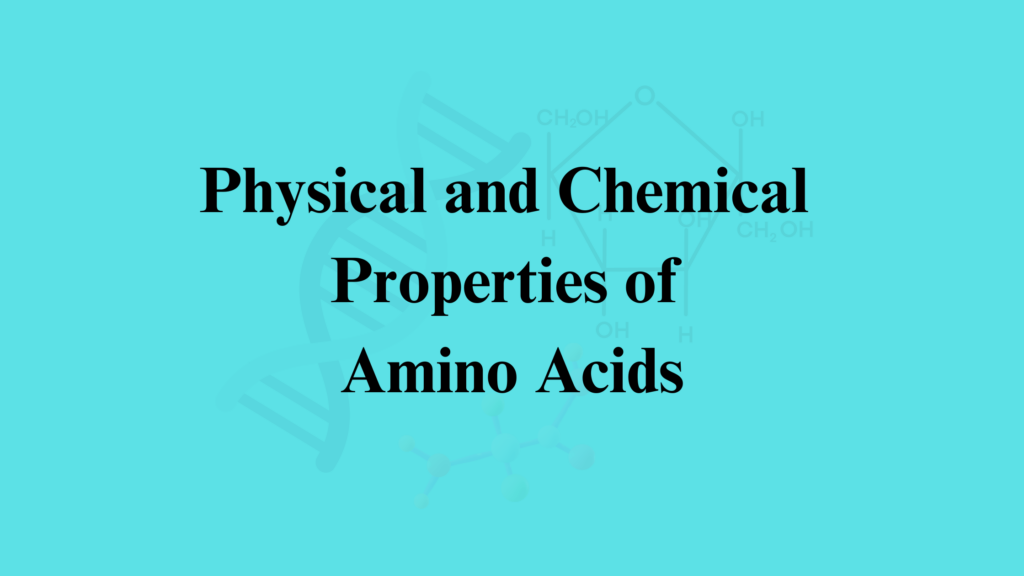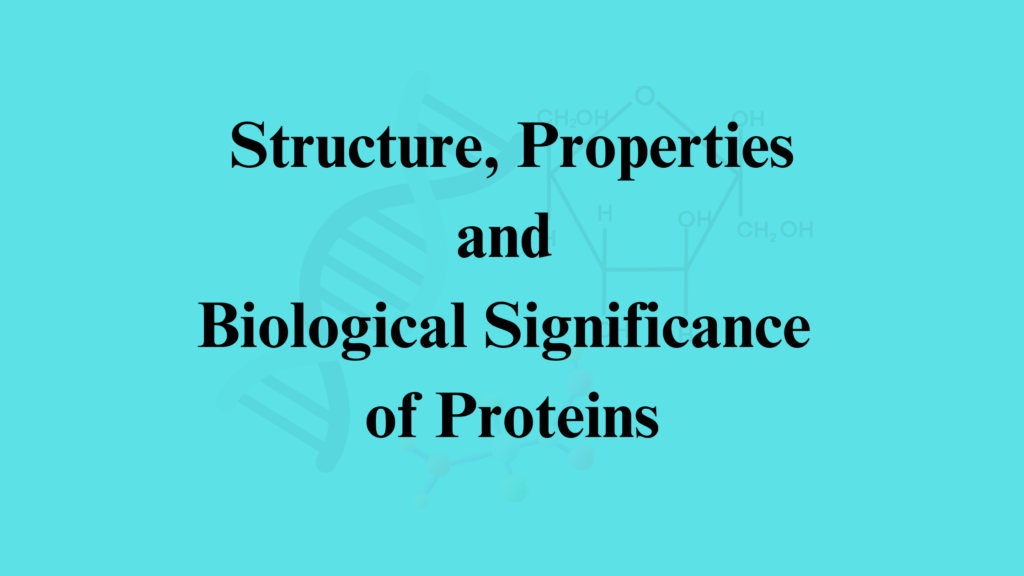Of all the organic compounds in a living being, carbohydrates are the most abundant molecules. This post explains the types of carbohydrates and its classification.
Carbohydrates are seen in starch, sugar, nucleotides, cell membranes, etc. Chemically, they are neutral compounds of carbon, hydrogen, and oxygen. They are the basic diet constituents and are seen in all animal and plant tissues. They are produced as a result of photosynthesis in plants. Their chemical formula is Cn(H2O) with a ratio of 1:2:1 for carbon, hydrogen, and oxygen, respectively. The ‘n’ usually ranges from 3-7.
nCO2 + nH2O + energy CnH2nOn + nO
Carbohydrates are also called polyhydroxy aldehydes or ketones. On hydrolysis, carbohydrates yielded aldehydes or ketones. Some carbohydrates are linked to proteins and lipids to form glycoproteins and glycolipids, respectively. Carbohydrates such as ribose and deoxyribose form an integral part of the structure of genetic material such as RNA and DNA.
Classification of Carbohydrates
Carbohydrates are classified based on different factors, such as their functional group, number of carbon atoms, and number of sugar units.
Based on their functional group, carbohydrates are of four types
- Aldoses have an aldehyde group (-CHO), such as glucose, ribose, galactose, and glyceraldehyde.
- Ketoses having a keto group (R2C=O)
- Reducing carbohydrates will have a hemiacetal or hemiketal group. Examples include Glucose, fructose, maltose, galactose, lactose, etc.
- Nonreducing carbohydrates will not have any hemiacetal groups. For example, sucrose and all polysaccharides.
Based on the number of sugar units or single molecules, carbohydrates can be classified into,
- Monosaccharides
- Disaccharides
- Polysaccharides
Carbohydrates and Its Classification
Monosaccharides
Monosaccharides are carbohydrates with a single unit of sugar. They may be triose, tetrose, pentose, hexose, or heptose with an aldo or keto group. The term is derived from the Greek word Mono- which means single and Saccharine which means sugar. They usually have 3 to 10 carbon atoms in their structure, two or more hydroxyl (OH) groups, and an aldehyde or keto group.
Monosaccharides based on number of carbon atoms
Based on the number of carbon atoms, carbohydrates are of five types- trioses, tetrose, pentose, hexose, and heptose. These are monosaccharides or single-molecule carbohydrates with 3, 4, 5, 6, and 7 carbon atoms respectively. These monosaccharides are simple, water-soluble compounds with a sweet taste. Tetroses, pentoses, and hexoses are seen in crystalline form.
| NAME | FORMULA | ALDOSE | KETOSE |
| Triose | C3H6O3 | Glycerose | Dihydroxyacetone |
| Tetrose | C4H8O4 | Erythrose | Erythrulose |
| Pentose | C5H10O6 | Ribose | Ribulose |
| Hexose | C6H12O6 | Glucose | Fructose |
| Heptose | C7H14O7 | Glucoheptose | Sedoheptulose |
Structure of Monosaccharides
Monosaccharides exist in two forms, straight or open structure, and cyclic or ring structure.
Straight structure
An open or straight structure has the carbon atoms arranged in a straight line or row. Since the carbon atoms at the ends are not connected, this is called an open structure. Here the carbon atoms are arranged vertically while the hydrogen and oxygen molecules, as well as the side groups, are arranged horizontally. This is again divided into two types proposed by Fittig, Baeyer, and Fischer.
Give diagrams or pictures. https://www.lndcollege.co.in/syllabus/co_po/Carbohydrates%20-Classification,%20Structure%20and%20function.pdf
Ring structure
Cyclic or Ring Structure was proposed by Haworth in 1929, so it is called Haworth’s Projection Formula. Here, the sugar molecules exist as in a ring formation. Based on the total number of carbon atoms, they are classified into
- Furanose Ring – 5-carbon ring
- Pyranose Ring- 6-carbon ring
Physical Properties of Monosaccharides
Monosaccharides show physical properties such as stereoisomerism, optical activity, epimerism, anomerism, and mutarotation.
Stereoisomers
Stereoisomers are compounds that have the same structural formula but have different spatial arrangements. Carbohydrates such as glyceraldehyde and glucose have two isomers with respect to the arrangement of their H and OH molecules on the first carbon atom. These arrangements will give two mirror images. The one with OH group on the right is D-glucose and the other with OH group on the left is referred to as L-glucose.
Epimers
Epimers are compounds that have configurational changes in any carbon atom. This is likely in the C2, C3, or C4 atoms. This leads to spatial arrangement differences in two atoms that refer to epimers. These compounds are also named differently. Examples are glucose, mannose, and galactose. Glucose and mannose have the same structural formula but differ in their spatial arrangement of C2. On the other hand, glucose and galactose differ in the C4 carbon.
Anomers
Anomers are seen in cyclic carbohydrates that have a different spatial arrangement in C1 for an aldose and C2 in a ketose molecule. The anomers are referred to as alpha and beta of the respective D or L carbohydrates.
DIAGRAMS
Optical Activity of Monosaccharides
Optical activity is the ability of a compound to rotate the polar light to the left or right when the light passes through it. Carbohydrates show this property when they rotate the light to the right is called Dextrorotatory (+) and to the left, which is called Levorotatory (-).
Mutarotation
The equilibrium difference between the anomers causes them to rotate the polarized light differently. This is called mutarotation. A carbohydrate with a hemiketal or hemiacetal group shows this property. The specific rotation of α-D-glucose and β-D-glucose are +112° and +19° respectively. When they attain equilibrium, one-third of the molecules show the alpha property while two-thirds of them will have the beta type to attain the +52.5° rotation.
Chemical Properties of Monosaccharides
Oxidation
When glucose is treated with Fehling‘s solution, it forms gluconic acid with a red precipitate of Cu2O and water.
C6H12O6 + 2Cu(OH)2 —> C6H12O7 + Cu2O + H2O
Similarly, glucose when treated with Tollen’s reagent, produces gluconic acid and silver molecules.
C6H12O6 + Ag2O —> C6H12O7 + 2Ag
Reduction
Due to the presence of carbonyl and hydroxyl groups, all monosaccharides are reducing agents where they can react with a basic solution such as a deep blue solution of Benedict’s reagent (Cu2+) to form a red precipitate of Cu2O or Copper Oxide.
Glucoside formation
Glucose when treated with methyl alcohol with HCl as a catalyst, forms methyl glucoside and water.
DIAGRAM
Osazone formation
Continual treatment of glucose with phenylhydrazine leads to the formation of osazone. First glucose is converted into glucose hydrazone which is then converted into aldohydrazone with further treatment with the same agent. This aldo hydrazone when treated with phenyl hydrazone is turned into osazone.
Glucose + Phenylhydrazine ———> Glucose hydrazone + water
Glucose Hydrazone + Phenylhydrazone ———> Aldo hydrazone + Aniline + Ammonia
Aldo hydrazone + Phenylhydrazone ———> Osazone + water
Diagram
Fermentation
On fermentation, glucose and other monosaccharides produce ethyl alcohol.
Acetylation
Monosaccharides on treatment with acetic anhydride, in the presence of zinc chloride (ZnCl2), produce penta acyl derivatives.
C6H12O6 + 5(CH3CO) 2O ———> 5CH3COOH
Disaccharides
When two monosaccharides combine with a glycosidic bond and release a water molecule, they form a disaccharide. Disaccharides are sweet in taste, crystalline in form, and soluble in water. On hydrolysis, a disaccharide is dissociated into its two monosaccharides. Lactose, maltose, isomaltose, cellobiose, sucrose, and trehalose are disaccharides. They can be reducing or non-reducing agents. Depending upon the type of monosaccharides participating, disaccharides are of two types,
- Homodisaccharides
- Heterodisaccharides
Homodisaccharides
When the disaccharides contain the same molecules, they are called homodisaccharides. They are reducing agents. Maltose, isomaltose, and cellobiose are examples. Both maltose and isomaltose are formed of 2 alpha glucose molecules, but they differ in the linkage.
- Isomaltose has an α-(1-6)-linkage of α-glucose molecules. They are produced by hydrolysis of dextran.
- Maltose has an α-(1-4) linkage of α-glucose molecules. Maltose is produced as a result of hydrolysis of starch by amylase.
- Cellobiose is formed of 2 beta-D glucose molecules. Produced by the acid hydrolysis of cellulose.
Heterodisaccharides
When the two monosaccharides in a disaccharide are different types of molecules, they are called heterodisaccharides. These are non-reducing agents. Sucrose and lactose are common examples.
- Lactose contains galactose and glucose.
- Sucrose, the common table sugar contains glucose and fructose. The link is between the C1 of glucose and the C2 of fructose.

Oligosaccharides
Oligosaccharides are long-chain carbohydrates with up to 10 monosaccharides. Common examples are verbascose, stachyose, and raffinose.

Polysaccharides
Polysaccharides are long-chain polymers of monosaccharides. They are insoluble in water and are commonly seen in dietary fibres. Polysaccharides are mostly resistant to digestion and undergo fermentation. Depending on the type of monosaccharide units involved, they can be homo or hetero in nature. Examples of polysaccharides are,
- Cellulose
- Chitin
- Dextran
- Glycogen
- Hemi cellulose
- Inulin
- Lignin
- Pectin
- Starch
Cellulose
Cellulose is a result of β-(1,4) glycosidic linkages of β-glucose molecules, formed into a straight chain of 100-1000 units. Among all the organic compounds, cellulose is the most abundant in the world. It is widely seen in plants, specifically in their cell wall, that produce strength and rigidity. In woods, cellulose forms 50% of the cells.
- Cellulose microfibrils are a result of weak hydrogen bonds between two or more chains arranged to form a thicker bundle. These are also called fibres.
- In plant cell walls, cellulose forms complex structures with hemi cellulose and calcium pectate to glue together for a stronger structure. Hemi cellulose is a product of glucose and acetyl derivative of glucose.
- Animals cannot digest cellulose, so it ends up being the fibre or roughage that cleans up the digestive system.
- Some animals have a colony of particular bacteria that help them digest cellulose.
- Industrially, cellulose is used in the form of paper, wood, rayon, cellophane, photographic films, etc.
Chitin
Chitin is a straight, unbranched polymer of N-Acetyl-D-glucosamine, commonly found in fungi and exoskeletons of some lower animals and arthropods such as crabs, shrimp shells, insects, etc. They are a derivative of cellulose where the hydroxyl group in the C2 is replaced by an acetamido (–NH(C=O) CH3) Group.
Dextran
Dextran is a branched polysaccharide made of amylopectin. The straight chain in dextran has α1,6glycosidic linkages and the branches have α-1,3 linkages. It has a bacterial origin commonly seen in oral bacteria where it adheres to the teeth to form plaque.
Glycogen
Glycogen is the storage polysaccharide in animals and humans. 10% of liver mass and 1-2% of muscle mass is glycogen. Excess glucose is converted into glycogen by glycogenesis. Glycogen is formed by the polymerization of α D-Glucose, similar to that of amylopectin. The difference here is that branches are more common in glycogen and are shorter than in amylopectin with just 10-13 units. It can be converted into glucose for energy production. It is a non-reducing sugar.

Inulin
Inulin is a plant-based polysaccharide found in onion, garlic, tubers of artichoke and dahlia, roots of dandelion etc. It is made of 30-35 fructose molecules with β–1,2 links. It is found in plants that do not contain starch. Commercial inulin is extracted from chicory root. It has antibacterial properties and can be used as a substitute for wheat, sugar, and fat.
Starch
Starch is the most abundant polysaccharide which is a storage component in plants. The photosynthetic product, glucose, is stored as its polymer. It is insoluble in water but forms a colloidal suspension. The monomers of starch are α–D- glucose. These glucose molecules link together to form two types of polymer, based on its linkage.
The α–1,4 glycosidic bondage of these glucose molecules results in amylose. Amylose has a coiled structure with gaps in between. It is in these gaps the iodine incorporates, leading to its staining property.
On the other hand, the α–1,6 glycosidic bondage of these monomers produces amylopectin.
Hydrolysis of starch leads to the formation of amylose and amylopectin. When reacted with iodine, it forms a red-violet colour. Due to the over-presence of amylose, this colour is masked by the blue-black colour of amylose.
The starch molecule consists of 20-30 subunits, with branches. Amylase enzyme is necessary for the breaking of starch molecules.
Mucopolysaccharides
Mucopolysaccharides are polysaccharides that are a mixture of simple sugars and derivatives of amino sugars and uronic sugars. A few examples of mucopolysaccharides are as follows.
- Chondroitin
- Dermatan Sulfate
- Gums and mucilages
- Heparin
- Hyaluronic acid
- Keratan sulfate
- Murein
References
- https://www.uou.ac.in/sites/default/files/slm/BSCBO-303.pdf
- https://www.sathyabama.ac.in/sites/default/files/course-material/2020-10/note_1456404597.pdf
- Amchra, Fatima & Faiz, Chaouki & Chaouqi, Soukaina & Khiraoui, Abdelkarim & Benhmimou, Abderrahmane & Guedira, Morocco & Guedira, Taoufiq. (2018). Effect of Stevia rebaudiana, sucrose and aspartame on human health: A comprehensive review. Journal of Medicinal Plants Studies. 102. 102-108.
- Verboni, Michele & Lucarini, Simone & Duranti, Andrea. (2021). 6′-O-Lactose Ester Surfactants as an Innovative Opportunity in the Pharmaceutical Field: From Synthetic Methods to Biological Applications. Pharmaceuticals. 14. 1306. 10.3390/ph14121306.
Additional Reading
- Types, Properties & Biological Functions of Lipids
- Characteristics of Amino Acids
- Classification Of Proteins




